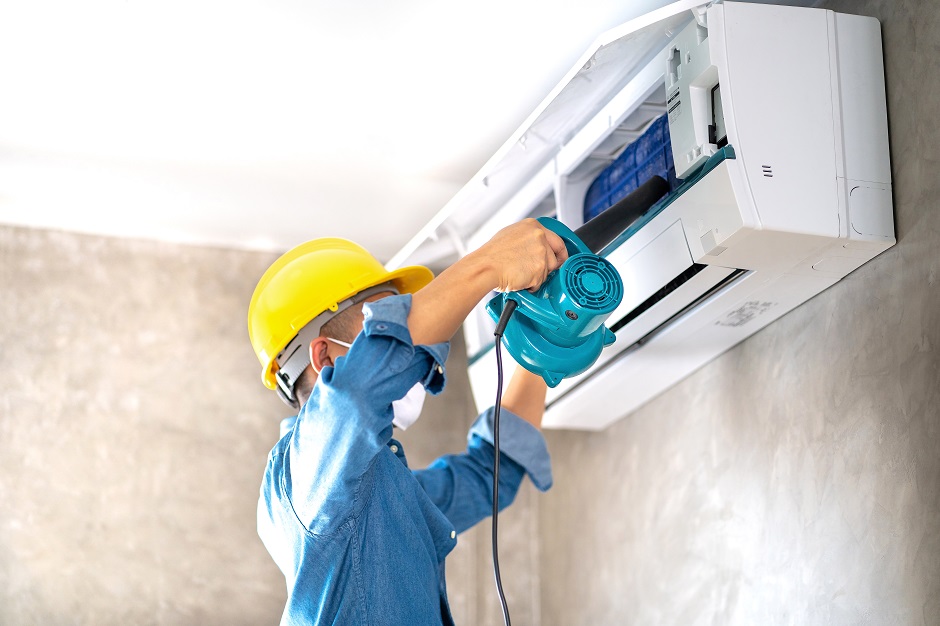Installing an air conditioner is a wonderful solution to outsmarting heat, but it has to be done right, particularly when it comes to installing the unit. Perhaps the least understood but most critical step in the procedure of AC support bracket installation. The bracket gives your AC unit much-needed support to avoid tipping over or falling, resulting in damage, inefficient performance, or even harm.
In this ultimate guide, we will walk you through the fundamentals of AC support bracket installation, point out mistakes, and show you how to avoid them for a hassle-free and safe installation.
Why Is AC Support Bracket Installation Important?
Let’s first see why AC support bracket installation is crucial:
- Safety: Avoids the unit from falling and injuring itself.
- Stability: Holds the AC firmly in place during operation.
- Efficiency: Achieves proper tilt for functioning and drainage.
- Longevity: Distributes the pressure on the wall or window, thus extending the life of your system.
The right installation of a support bracket can save you money and allow you to maintain your investment in the future.
Common Mistakes to Avoid in AC Support Bracket Installation
1. Skipping the Bracket Altogether
Most people incorrectly believe that the window frame itself will hold their AC unit. Not only is this unsafe, but it is also illegal in most locations.
What to do instead:
Use a reputable AC support bracket designed for your unit size and weight at all times. It’s worth the cost in terms of safety and durability.
2. Choosing the Wrong Type of Bracket
AC support brackets are available in various styles and sizes. Buying the incorrect one will result in a shaky mount.
What to do instead:
Measure your AC’s weight and dimensions before purchasing. Double-check compatibility with your window type (double-hung, sliding, etc.) and weather exposure.
3. Improper Measurement
Incorrect information about measurements can interfere with the mounting of brackets, leading to improper support or imbalanced tilt.
What to do instead:
Take measurements of the width of your window, the size of your AC unit, and the available space outdoors. Use a level to make sure the bracket is horizontal.
4. Incorrect Tilt Angle
Your AC unit must be slightly tilted backward to allow condensation to drain out. Otherwise, water may collect inside the unit.
What to do instead:
Check your maker’s manual for the proper tilt—typically 1/4 to 1/2 inch toward the outside.
5. Not Securing the Bracket Properly
A loosely secured bracket goes against its function and rocks your AC system.
What to do instead:
Read the installation instructions carefully. Use screws and bolts appropriate for your window frame or wall type. Tighten them well but not too tightly.
6. Using Low-Quality Materials
Cutting corners by purchasing a cheap bracket is a recipe for disaster.
What to do instead:
Purchase a strong, rust-proof AC support bracket. Powder-coated steel or stainless steel brackets are excellent choices for the long term.
7. Failing to Test the Stability
It frequently occurs that individuals install the bracket and the AC unit without verifying whether its stability is good or bad.
What to do instead:
After installation, press the bracket softly so that it is well fixed. Check if the AC unit does not move and remains in position.

Maintenance Tips After Installation
With the best AC support bracket installation, maintenance becomes necessary:
- Check periodically: Check periodically for rust or looseness on the bracket every few months.
- Clean debris: Keep the area around the bracket free from leaves, dirt, and other debris.
- Winter removal: If you remove the AC for the winter, inspect and clean the bracket before reinstallation.
Should You DIY or Hire a Professional?
If you’re handy and follow the instructions carefully, DIY AC support bracket installation is totally doable. However, if you’re unsure or dealing with a high or complex window setup, hiring a professional may be the safest option.
Frequently Asked Questions
Q1. What is an AC support bracket, and why is it important during installation?
Ans: An AC support bracket is a device utilized to properly support a window air conditioner. Proper installation of an AC support bracket prevents the device from falling, allows adequate drainage, and increases general security and stability.
Q2. Can I install an AC support bracket by myself?
Ans: Yes, it is most probable that the majority of individuals are able to perform AC support bracket installation easily with minimal equipment and instruction guides. Nevertheless, if your window configuration is complicated or ambiguous, it is better to leave it to a professional for safety and accuracy’s sake.
Q3. How do I choose the right AC support bracket for my unit?
Ans: To select the correct bracket, take into consideration the weight of your AC unit, the style of window, and the style of material in the bracket. Correct AC support bracket installation relies on installing a bracket that is made for your unique unit and building.
Q4. What are the most common mistakes in AC support bracket installation?
Ans: Common errors are omitting the bracket altogether, employing an inappropriate type of bracket, inaccurate measurements, and failing to secure the bracket properly. Avoidance of these problems guarantees an accurate and permanent AC support bracket setup.
Q5. Do all window AC units require a support bracket?
Ans: Most window AC units, particularly the heavier ones, need a support bracket to meet the safety codes and avoid damage. Always refer to the manufacturer’s manual prior to installing the AC support bracket.
Conclusion
Proper installation of the AC support bracket is essential to the safety, efficiency, and long-term life of your air conditioner. With some care to keep from making mistakes and a step-by-step, meticulous approach, you can have your AC stable and functioning to cool your house efficiently. Always keep in mind quality material, accurate measurements, and snug fittings to get the best results. Take the time and do it right, and your AC will reward you with long-term operation for many years to come.








